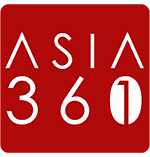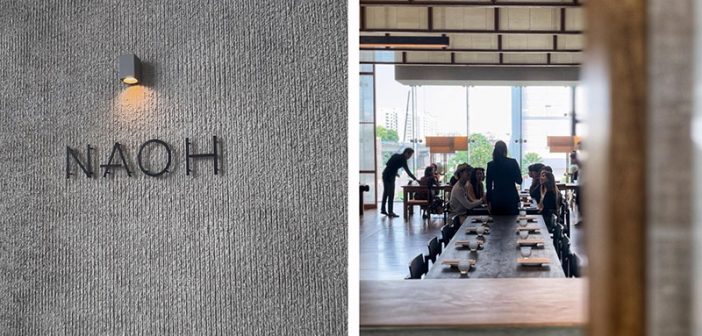One does not expect to find a fine-dining Korean restaurant—let alone one of the city’s most thoughtfully conceived culinary gems—hidden within a futuristic car manufacturing facility on the furthest western edge of Singapore. And yet, there it is: Na Oh, nestled within the Hyundai Motor Group Innovation Centre Singapore (HMGICS), quietly defying expectations and redefining what Korean cuisine can be.
For a year now, whispers of Na Oh’s elegance and innovation have circulated among those in the know. Friends had spoken of its poised service, its reverent treatment of seasonal Korean ingredients and its near-meditative atmosphere. Still, for reasons both practical and perhaps unconsciously prejudiced, I have never made the journey to the west. Korean food, I must admit, had never struck me as something I’d describe as graceful or refined. My mind went instinctively to kimchi, barbecued meats and bustling, casual eateries.
All that changed with a single meal.
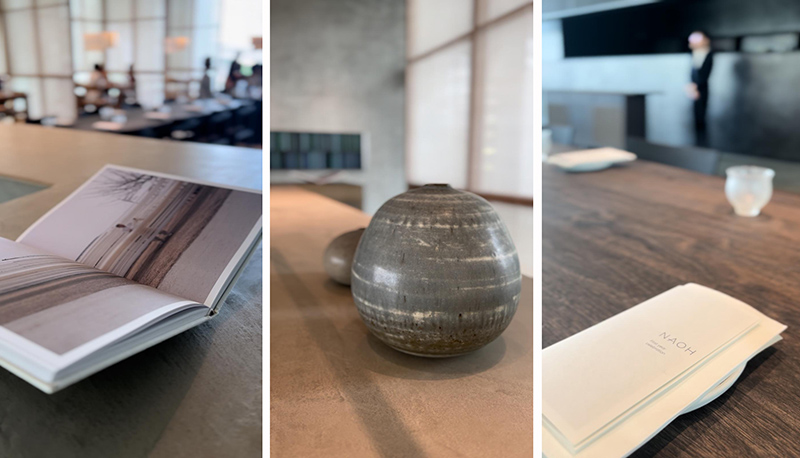
Photos © Katherine Goh
I was recently invited to an intimate, closed-door luncheon to commemorate Na Oh’s first anniversary—a milestone celebrated with extraordinary flair. For this singular occasion, the restaurant had obtained a rare and exceptional indulgence: Jeju Hanwoo beef, the prized Korean cattle known for its exceptional marbling and tenderness. Its import into Singapore was specially approved for this one event, making the meal not merely exquisite, but truly once-in-a-lifetime.
From the moment I stepped into Na Oh’s softly lit, timber-toned interiors, it became clear that this was not a typical Korean dining experience. The restaurant exudes calm, restraint, and balance—principles not only of Korean aesthetics but of Na Oh’s culinary philosophy. Service was warm but unobtrusive, and the dining room, though minimal in design, enveloped me in quiet luxury.
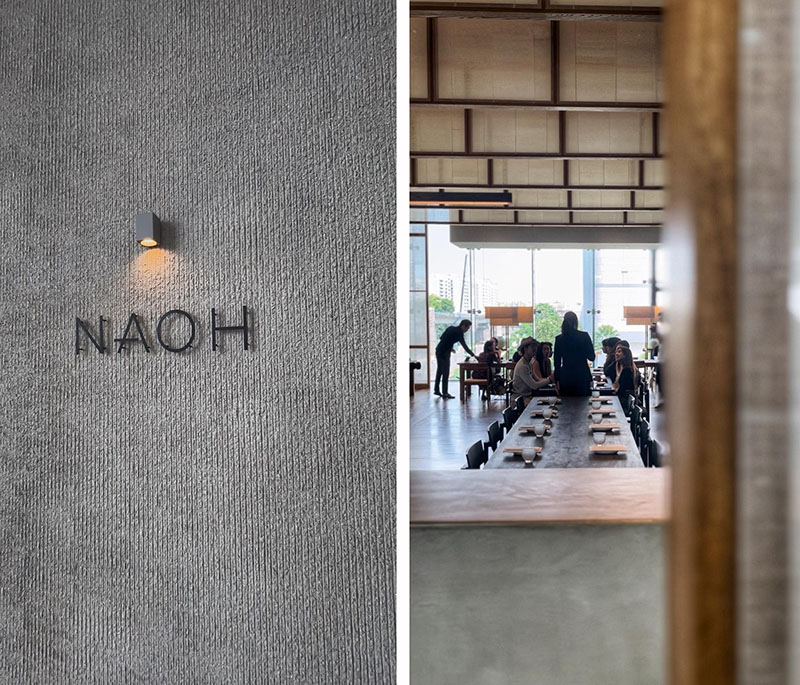
Photos © Katherine Goh
Behind this remarkable vision is Chef Corey Lee, the acclaimed Korean-American chef behind San Francisco’s Benu, which holds three Michelin stars. Known for his cerebral approach to cuisine and mastery of both Western and Korean culinary traditions, Chef Lee brings his rarefied sensibility to Na Oh. His philosophy is rooted in reinterpreting heritage with refinement—honouring the spirit of Korean cuisine while elevating it through meticulous technique and contemporary expression.
The name “Na Oh” itself means “moving from inside out” in Korean—a nod to the restaurant’s philosophy of nurturing from within, and perhaps also a poetic reflection of its unique setting. Within the high-tech walls of HMGICS, Na Oh offers a serene contrast—a deeply human, almost spiritual experience of nourishment and care.
The Start of an Elegant Journey
The experience began with a gentle flourish: a member of the service team approached our table carrying a tray of raw Hanwoo beef, glistening with impossibly delicate threads of marbling. It was a gesture that struck the perfect tone—both a visual prelude and a silent promise of the excellence to follow.
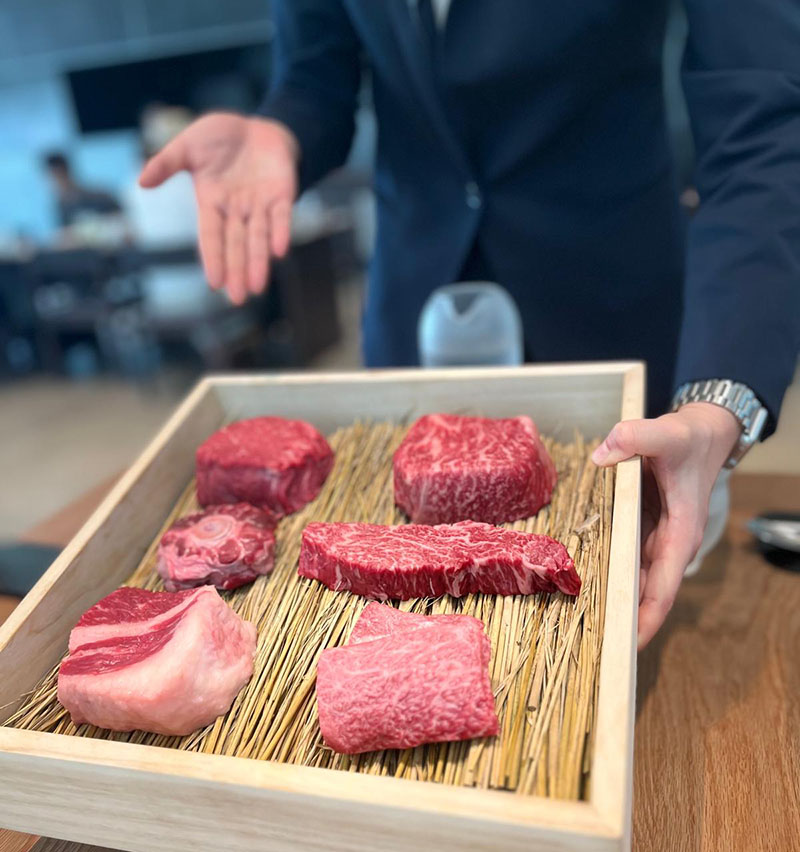
Photo © Katherine Goh
The first course set the tone: housemade tofu with a Hanwoo-infused aged soy sauce. The tofu was feather-light, trembling on the spoon, while the soy carried a quiet depth—subtle, savoury, and imbued with the essence of the prized beef. It was a masterclass in minimalism, where each element was allowed its own moment of quiet beauty.
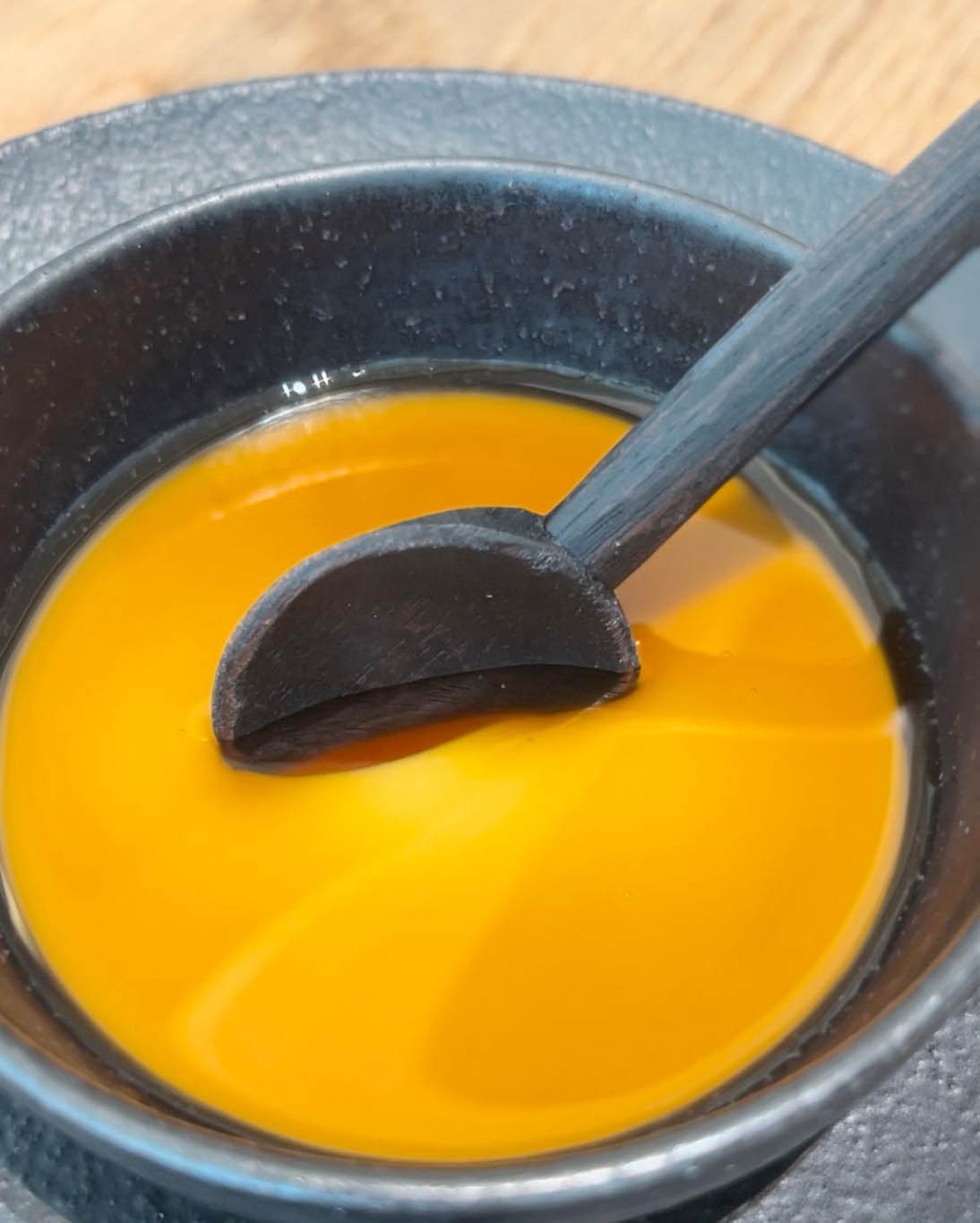
Housemade tofu with a Hanwoo-infused aged soy sauce. Photo © Katherine Goh
Then came the Jeon, or traditional Korean pancakes—though this version bore little resemblance to the rustic renditions I know. Presented as an elegant trio, it featured 1+ Hanwoo tenderloin, plump oyster, and summer squash, accompanied by the crisp tang of Nabak kimchi. The textures were impeccably balanced: tender meat, silken shellfish, crisped edges—all held together by the lightest of batters.
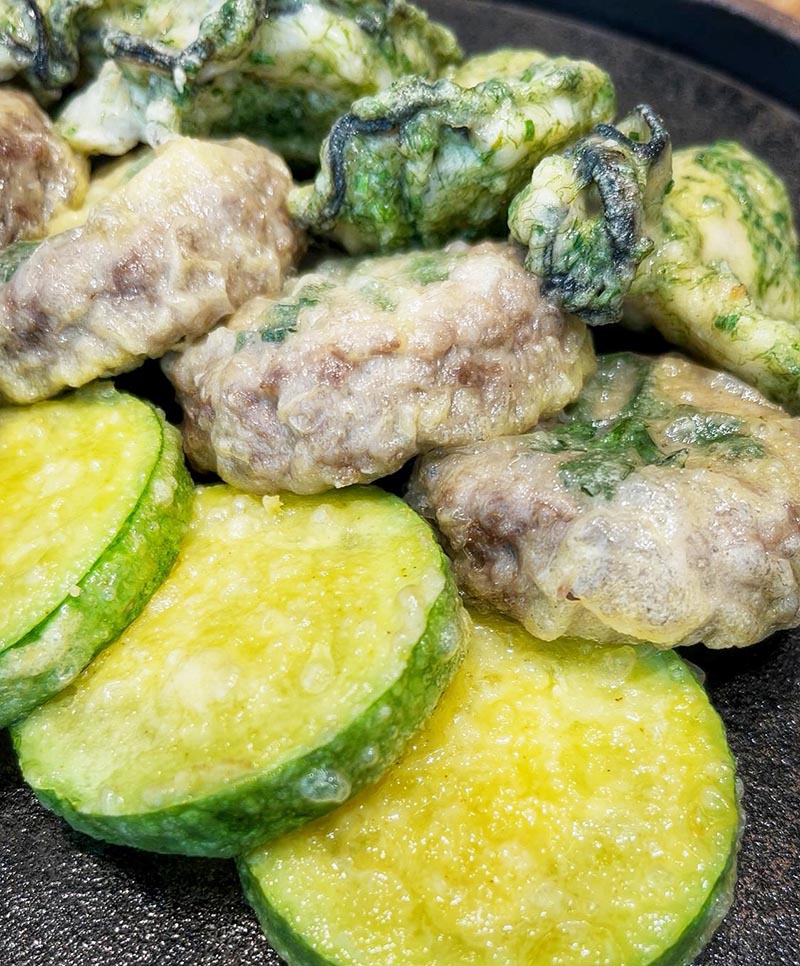
Jeon features 1+ Hanwoo tenderloin, oyster and summer squash. Photo © Katherine Goh
The following course was arguably one of my favourites: a striking Hanwoo striploin yukhwe, Korea’s answer to beef tartare. Here, it was accompanied by Deodeok pear, offering a cleansing sweetness; a crisp rock seaweed bugak; and a delicate kiss of gochujang. To eat, we were told to mix the beef tartare with its accompanying embellishments and put it on the bugak. What could have been bold and brash was instead measured, poised, and layered with nuance. It was Korean tradition reimagined with the utmost sophistication.

Yukhwe is Korea’s renditon of beef tartare. Photo © Katherine Goh
As the meal progressed, we arrived at the centrepiece: a charcoal-grilled 1++ Hanwoo rib cap and marinated galbi, served alongside vibrant leaves from HMGICS’s own Smart Farm. The interplay between richly marinated meat and verdant freshness was enhanced with a housemade ssamjang and a delicate chamnamul muchim—a wild herb known for its slightly peppery bite. The meat, of course, was sublime: smoky, yielding, with a depth that lingered long after the final bite.
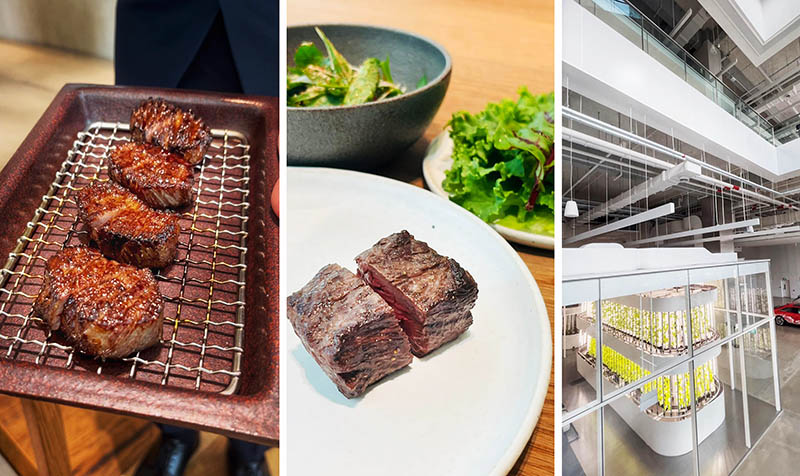
Photos © Katherine Goh
For the unacquainted, Hanwoo beef is regarded as one of the most premium meats in Asia, celebrated for its natural sweetness, fine grain and extraordinary marbling. Unlike wagyu, which has gained global recognition, Hanwoo remains something of a national treasure in Korea—rarely exported, and revered domestically for its clean finish and distinctly Korean terroir. Hanwoo beef is graded based on marbling, colour, fat colour, texture, and ageing using a different grading system from, say, Japanese wagyu. The Hanwoo beef grades range from 3 to 1++, with 1++ being the best of the best, with even more marbling and a more refined flavour profile.
The Hanwoo served at this meal was from Bodeulgyeol, a premium Hanwoo brand from Jeju Island, and a breed of exceptional quality, raised on pristine pastureland and fed a meticulously curated diet. To taste it is to understand why it inspires such devotion.
At this juncture, I found myself glancing at the menu with mild concern. The courses, though impeccable, had leaned toward the restrained. Would I leave this beautiful meal hungry? But the kitchen had one more surprise in store: a bowl of Hanwoo gomtong.
This traditional beef bone soup was anything but simple. A medley of brisket, short rib, oxtail, and tendon arrived in a broth so rich, so nurturing, it felt almost homely. It was served with fragrant golden Queen rice, a delicately flavoured abalone jang, and a small dish of chonggak kimchi, of which the bright acidity provided the perfect counterpoint to the soup’s unctuous depth. This was not just comfort food—it was a gentle, restorative hug cloaked in culinary craftsmanship.

Photos © Katherine Goh
Dessert was a quiet ode to the season: a summer peach bingsu, airy as a whisper. Finely shaved ice, perfumed with ripe peaches, offered just enough sweetness to lift the palate without overwhelming it. It was the perfect epilogue—a gentle parting note that lingered delicately, like the softest silk against skin.
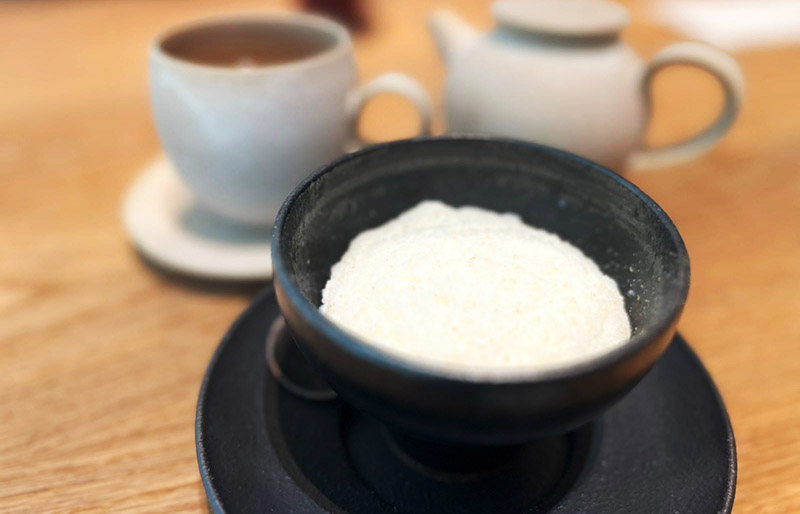
Summer Peach Bingsu. Photo © Katherine Goh
Na Oh has not merely elevated Korean cuisine in Singapore—it has reshaped it in the image of modern refinement. That it exists within a car innovation centre only deepens its quiet mystique. To dine here is to discover something wholly unexpected, and entirely unforgettable. A year on, it is no wonder that Na Oh has garnered such quiet reverence. I only regret that it took me so long to find my way to its doors.
But some things, it seems, are worth the wait.
Na Oh
2 Bulim Ave
HMGICS, Level 3,
Singapore 649674
Opening hours: Wed to Sun – 11.30am to 3.30pm and 6pm to 10pm; closed on Mon and Tue
